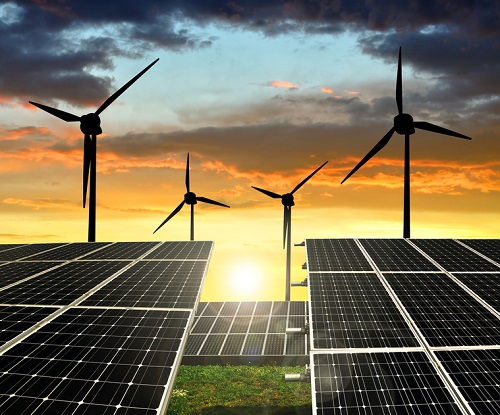 Loading... Please wait...
Loading... Please wait...- Home
- Solaris Blog
- California Solar and Grid Technology
Products
- Solar Panels
- Solar Panel Kits
- Solar Generators
- Inverters
- Inverter Monitoring
- Inverter Accessories
- Balance of Systems
- Racking and Mounting
- Rails
- Flashings
- Splice Kits
- Stopper Sleeves
- Conduit Mounts
- Attachments
- Brace Assembly
- Base Mount
- Brackets
- Bolts
- Clamps
- Caps
- L-Feet
- Washers
- Skirt
- Lugs
- Tilt Legs
- Hooks
- Stand-Offs
- Ballast Bay
- Top of Pole Mount
- Side of Pole Mount
- Flush Mount Kits
- Ground Mount Kits
- Roof Mount Kits
- Hardware Packages
- Wire Management
- Batteries
- Battery Accessories
- Charge Controllers
- Tools and Supplies
- View All Products
California Solar and Grid Technology
Posted by Brandi Casey on 23rd Mar 2017

California is well known in the United States as being a leader in residential, commercial and utility scale renewable energy installations. The state offers a vast array of incentives and rebates to encourage homeowner and business installations which many take full advantage of. These incentives along with the benefit of going green is the foundation that California continues to grow its renewable energy future. However, old grid technology may stunt the California’s growth if the grids are not property updated.
A solar energy plant California Independent System Operator (CAISO) has had to turn off or turn down its plant during numerous hours throughout the day when there isn’t enough electricity demand within the state to absorb all the renewable energy being produced. Their renewable energy portfolio includes wind, geothermal, and hydropower in addition to their solar plant that produces three times California’s energy needs. This massive amount of power may be thought as the key to complete renewable energy dependence, however the states transmission system is highly inefficient and marketing barriers caused by the thirty-eight separate “balancing authorities” prevent the energy from being fully utilized.
Without complete integration of the western grid, California’s renewable energy is too often blocked from reaching consumers within the state, and the problem is steadily increasing as renewable energy sources become more efficient and grid technology remains the same. In order to resolve this ongoing and progressing problem, fully integration into the western grid and consolidation of the “balancing authorities” must be done. By integrating the western power grid, the reduction in greenhouse gas emission and energy costs to consumers could be fully realized.
The first step toward western grid integration by the California Legislature authorizing the transition and allowing the California Independent System Operator to establish a governing board within the entire west must be established. It must also offer its resources to any utility company or generator to join. The action however, is at least two years out, and renewable energy advocates continue to argue that the time frame would be far too long and that an immediate action needs to be taken in order to ensure that renewable energy continues to steadily grow.
Although the state is certainly not in danger of losing renewable energy business in terms of residential, commercial and utility installations the outdated interconnection technology will certainly continue to affect efficiency. The complication may further deter new utilities from coming into the solar market and investing themselves. If utility companies believe that they cannot offer real incentives to their consumers, they are less likely to use the renewable energy route.
Overall, there are very passionate and well backed groups in California, and the state is unlikely to have to wait for two years for legislation to catch up to the energy demand. As long as the state continues to utilize their individual strengths and voice their demands, a resolution to the complications caused by the multiple power authorities and investment in technology is sure to happen at a much quicker pace.



